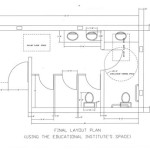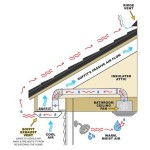How Much For Bathroom Vanity Installation?
Bathroom vanity installation is a common home improvement project that can significantly enhance the aesthetic appeal and functionality of a bathroom. However, understanding the costs involved is crucial for budgeting and planning the project effectively. The price of installation can vary widely based on several factors, making it important to understand these variables before embarking on the project.
This article will explore the average costs associated with bathroom vanity installation, the factors that influence pricing, and potential additional expenses to consider. It also delves into the different types of vanities, the labor involved, and ways to potentially save money on the installation process, providing a comprehensive guide to help homeowners make informed decisions.
Average Cost of Bathroom Vanity Installation
The average cost of bathroom vanity installation typically ranges from $300 to $3,800, encompassing both the cost of the vanity itself and the labor charges associated with installation. This range encompasses a wide variety of vanity options, from simple, pre-assembled models to custom-built, high-end units. The final price is highly dependent on the type of vanity selected, the complexity of the installation, and the region in which the installation is taking place.
For a basic, pre-assembled vanity, including installation, the cost might fall between $300 and $800. These vanities generally require less labor and are easier to install, contributing to lower overall costs. Mid-range vanities, which offer a balance between quality and affordability, can range from $800 to $2,000, including installation. High-end or custom-built vanities, with complex designs and premium materials, can easily exceed $2,000, with installation costs potentially reaching $3,800 or even higher. These installations often involve intricate plumbing work, customized cabinetry, and specialized finishes, thereby increasing both material and labor expenses.
It's important to note that these are just average costs. Obtaining multiple quotes from different contractors is highly recommended to get a more accurate understanding of the potential expenses involved in a specific project.
Factors Influencing Installation Costs
Several factors can significantly influence the cost of bathroom vanity installation. These factors range from the type of vanity chosen to the existing plumbing configuration and the complexity of the installation process. Understanding these influences can help homeowners make informed decisions and potentially control project costs.
The type of vanity is the most significant cost driver. A simple, pre-assembled vanity will always be less expensive to install than a custom-built vanity that requires significant modifications to the plumbing or electrical systems. Wall-mounted vanities, for example, often require more complex installation as they need to be securely anchored to the wall, potentially involving modifications to the wall structure itself. Double vanities, which include two sinks and more cabinetry, inherently cost more due to the increased size, material, and labor required.
The location and condition of the existing plumbing also play a crucial role. If the existing plumbing lines need to be relocated or updated to accommodate the new vanity, this will add to the overall cost. Older homes may have outdated plumbing that requires replacement, further increasing expenses. Similarly, the condition of the subfloor and surrounding walls can impact the installation cost. If there is water damage or rot, these areas will need to be repaired before the vanity can be installed, adding both time and materials to the project.
The complexity of the installation is another important factor. A simple replacement of an existing vanity with a similarly sized and configured model will typically be less expensive than a more complex installation that involves rerouting plumbing, electrical work, or structural modifications. Custom features, such as integrated lighting or specialized countertops, can also increase the cost of installation.
Lastly, geographic location can influence the price. Labor costs and material availability can vary significantly depending on the region. Areas with a higher cost of living will typically have higher labor rates, while remote areas may have higher material costs due to transportation expenses.
Additional Costs to Consider
Beyond the basic cost of the vanity and its installation, there are several additional costs that homeowners should consider when budgeting for this project. Failing to account for these potential expenses can lead to unexpected budget overruns and project delays.
One of the most common additional costs is plumbing modifications. As mentioned previously, if the existing plumbing lines need to be moved or updated to accommodate the new vanity, this will incur additional charges. This can involve rerouting pipes, installing new shut-off valves, and ensuring proper drainage. In some cases, permits may be required for plumbing work, adding to the overall cost.
Electrical work is another potential expense. If the new vanity includes lighting or electrical outlets, it may be necessary to hire an electrician to install or update the wiring. This can involve running new circuits, installing new outlets, and ensuring that all electrical work meets local building codes. Even a seemingly simple task, like adding a GFCI outlet for safety, can increase the cost. Similarly, if the existing wiring is outdated or unsafe, it may need to be replaced, adding to the expense.
The countertop and sink are often purchased separately from the vanity, and their cost can significantly impact the overall project budget. Countertops come in a variety of materials, including granite, marble, quartz, laminate, and solid surface. Each material has its own price point, with natural stone countertops typically being more expensive than laminate or solid surface options. Similarly, sinks come in various styles, including undermount, overmount, and vessel sinks, each with its own installation requirements and associated costs.
Removal and disposal of the old vanity is another cost to consider. Some contractors include this service in their installation quote, while others charge an additional fee. Homeowners can also choose to remove and dispose of the old vanity themselves to save money, but this requires the appropriate tools and disposal methods.
Finally, any necessary repairs to the subfloor, walls, or surrounding areas can add to the expense. Water damage, rot, or structural issues should be addressed before the new vanity is installed to ensure a stable and long-lasting installation. These repairs can range from minor patching to extensive reconstruction, depending on the extent of the damage.
Types of Bathroom Vanities and Their Impact on Cost
The type of bathroom vanity selected has a significant impact on both the material cost and the installation cost. Different vanity styles require varying levels of labor and expertise to install properly. Understanding the different types of vanities and their associated costs can help homeowners make informed decisions that align with their budget and aesthetic preferences.
Pre-assembled vanities are generally the most affordable option. These vanities are typically mass-produced and come ready to install, minimizing the amount of labor required. They are available in a variety of sizes and styles, making them a good option for budget-conscious homeowners. However, pre-assembled vanities may not offer the same level of customization or quality as other options.
Semi-custom vanities offer a balance between affordability and customization. These vanities are typically sold as individual components, allowing homeowners to choose the cabinet style, countertop material, and sink type. This allows for a greater degree of personalization compared to pre-assembled vanities, while still remaining relatively affordable. The installation cost for semi-custom vanities is typically higher than for pre-assembled models, as it requires assembling the components and ensuring a proper fit.
Custom-built vanities are the most expensive option, but they offer the greatest degree of customization and quality. These vanities are built to order, allowing homeowners to specify every detail, from the cabinet design and materials to the countertop material and sink type. Custom-built vanities are often a good choice for bathrooms with unusual layouts or those requiring specific features. The installation cost for custom-built vanities is typically the highest, as it requires skilled craftsmen to build and install the vanity to exacting specifications. These installations can also involve significant modifications to the plumbing and electrical systems.
Wall-mounted vanities, also known as floating vanities, are another type of vanity that can impact installation costs. These vanities are mounted directly to the wall, creating a modern and minimalist look. However, the installation of wall-mounted vanities can be more complex than traditional floor-mounted vanities, as they require secure anchoring to the wall to support the weight of the vanity and the sink. In some cases, it may be necessary to reinforce the wall structure to ensure a stable installation.
Double vanities, which include two sinks and more cabinetry, inherently cost more than single vanities. They require more materials, more labor, and potentially more plumbing work, contributing to a higher overall cost. The installation of a double vanity may also require modifications to the existing plumbing system to accommodate two sinks, further increasing expenses.
Labor Costs for Bathroom Vanity Installation
Labor costs represent a significant portion of the overall bathroom vanity installation budget. The specific labor rates charged by contractors can vary depending on their experience, location, and the complexity of the project. Understanding how labor costs are calculated and what factors influence them can help homeowners negotiate fair prices and avoid potential overcharges.
Most contractors charge either an hourly rate or a flat fee for bathroom vanity installation. Hourly rates typically range from $50 to $150 per hour, depending on the contractor's experience and the location. Flat fees are typically based on the scope of the project and include all labor costs associated with the installation. While hourly rates may seem transparent, they can be difficult to predict accurately, especially for complex installations. Flat fees provide more certainty but may be higher if the contractor has overestimated the amount of labor required.
The complexity of the installation is the primary factor influencing labor costs. A simple replacement of an existing vanity with a similar model will typically require less labor than a more complex installation that involves rerouting plumbing, electrical work, or structural modifications. Custom features, such as integrated lighting or specialized countertops, can also increase labor costs.
The experience and skill of the contractor also play a crucial role. Experienced contractors with specialized skills, such as plumbing or electrical expertise, typically charge higher rates than less experienced contractors. However, hiring a skilled contractor can often save money in the long run by ensuring a high-quality installation that minimizes the risk of future problems.
The geographic location can also influence labor rates. Areas with a higher cost of living typically have higher labor rates than areas with a lower cost of living. Remote areas may also have higher labor rates due to limited availability of qualified contractors.
Before hiring a contractor, it's important to obtain multiple quotes and carefully review the scope of work included in each quote. Be sure to ask about any potential additional charges, such as disposal fees or travel expenses. It's also a good idea to check the contractor's references and read online reviews to get a sense of their reputation and quality of work.
Ways to Save Money on Bathroom Vanity Installation
For homeowners looking to reduce the cost of bathroom vanity installation, there are several strategies to consider. These strategies range from carefully selecting the type of vanity to performing some of the work themselves. While DIY options can save money, it is crucial to understand the risks involved and the potential for costly mistakes.
Choosing a less expensive vanity is the most straightforward way to save money. Pre-assembled vanities are generally the most affordable option, while custom-built vanities are the most expensive. Opting for a simpler design and less expensive materials can also help reduce the overall cost. For example, laminate countertops are typically less expensive than granite or marble countertops.
Avoiding major plumbing or electrical work can also save money. If possible, choose a vanity that fits the existing plumbing and electrical configurations. This will minimize the need for costly modifications and potential permit fees. If plumbing or electrical work is necessary, consider hiring a licensed plumber or electrician to ensure that the work is done safely and correctly.
Performing some of the work yourself, such as removing the old vanity or painting the walls, can also save money. However, it's important to be honest about your skills and abilities. Incorrectly performed DIY work can lead to costly mistakes and potential damage to your home. It's generally best to leave complex tasks, such as plumbing and electrical work, to professionals.
Shopping around for the best prices on materials and labor can also save money. Obtain multiple quotes from different contractors and compare their prices. Be sure to ask about any potential discounts or promotions. You can also shop around for materials at different retailers to find the best deals.
Consider purchasing the vanity during a sale or promotion. Many retailers offer discounts on bathroom vanities during certain times of the year, such as holidays or seasonal sales. Taking advantage of these promotions can help you save a significant amount of money.
Finally, proper maintenance of the new vanity can help extend its lifespan and avoid costly repairs. Regularly clean the vanity and address any minor issues promptly. Avoid using harsh chemicals or abrasive cleaners that can damage the finish. By taking good care of your new vanity, you can help ensure that it lasts for many years to come.

Bathroom Vanity Installation Cost 2024 Average S

2024 Vanity Installation Cost A Complete Guide

How To Install A Bathroom Vanity And Sink

How To Install A Bathroom Vanity

How Much Do Bathroom Cabinets Cost In 2024 Angi

How To Install Or Remove A Bathroom Vanity Homeserve Usa

2024 Cost To Replace Bathroom Countertop A Guide

How Much Do Custom Bathroom Vanities Cost
:max_bytes(150000):strip_icc()/diy-bathroom-vanity2-594416535f9b58d58a0ce30b.jpg?strip=all)
16 Diy Bathroom Vanity Plans You Can Build Today

Tutorial How To Install A Bathroom Vanity The Diy Playbook
Related Posts







